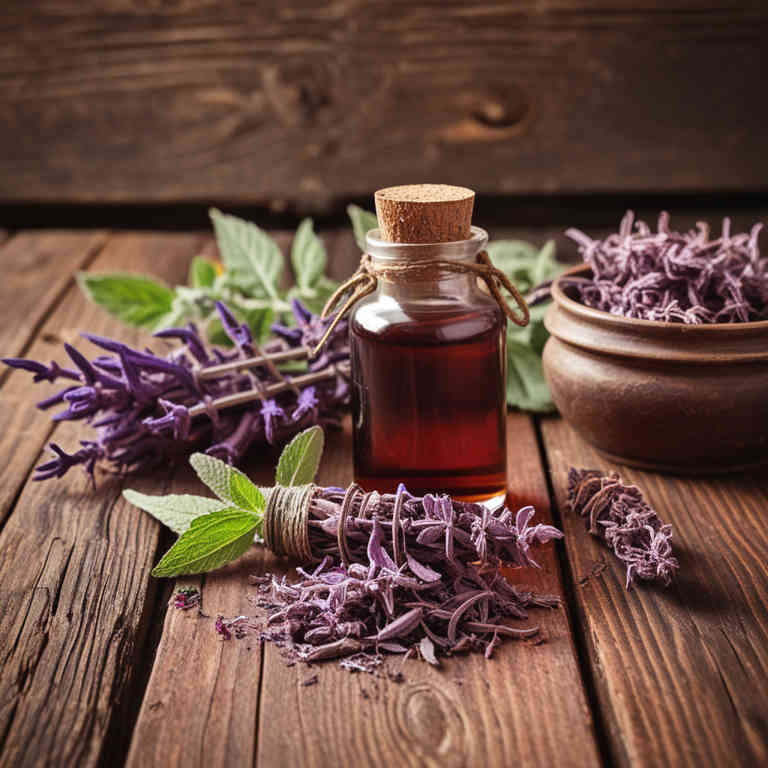Salvia miltiorrhiza tincture for medicinal use

Salvia miltiorrhiza tincture is a concentrated liquid extract made from the roots of the Salvia miltiorrhiza plant, commonly known as Chinese red sage.
It is widely used in traditional Chinese medicine and herbalism for its purported health benefits. This tincture is valued for its potential to support cardiovascular health, improve circulation, and reduce inflammation. It is often taken internally in small doses to address conditions such as poor circulation and menstrual issues.
Additionally, it may be used externally for skin conditions and wound healing.
Uses
Salvia miltiorrhiza tincture has been used to promote cardiovascular health and improve circulation for centuries, particularly in traditional Chinese medicine.
Historically, it was valued for its ability to support blood health and was often used to treat conditions like anemia and menstrual disorders. In modern times, it is widely studied for its potential to reduce inflammation and support heart function, with active compounds like salvianolic acid and tanshinone showing promise in clinical research. It is also used in contemporary herbal formulations to aid in stress relief and cognitive function.
Its versatility and long-standing reputation have made it a staple in both traditional and modern herbal practices.
Benefits
Salvia miltiorrhiza tincture has health benefits such as improving circulation, reducing inflammation, and supporting cardiovascular health.
It is traditionally used in Chinese medicine to promote blood flow and may help in the treatment of conditions like hypertension and atherosclerosis. The active compounds, such as tanshinone and salvianolic acid, are believed to contribute to its antioxidant and anti-inflammatory properties. It may also aid in reducing oxidative stress and supporting liver function.
This herbal preparation is often used to enhance overall well-being and support the body's natural healing processes.
Constituents
Salvia miltiorrhiza tincture active constituents include tanshinone IIA, salvianolic acid B, and cryptotanshinone, which are known for their potent antioxidant, anti-inflammatory, and neuroprotective properties.
These compounds help improve blood circulation and may support cardiovascular health by reducing oxidative stress and enhancing microcirculation. Tanshinone IIA is particularly noted for its ability to promote the growth of new blood vessels and protect against cellular damage. Salvianolic acid B contributes to the tincture's anti-inflammatory effects, making it beneficial for conditions like chronic inflammation and neurodegenerative diseases.
Overall, the active constituents of Salvia miltiorrhiza tincture are valued for their potential to support overall health and well-being.
Preparation
To make Salvia miltiorrhiza tincture, first gather dried roots of Salvia miltiorrhiza, also known as Danshen.
Next, place the dried roots in a clean glass jar and cover them completely with high-proof alcohol, such as vodka or grain alcohol. Let the mixture steep for at least four weeks, shaking the jar gently every few days to ensure even extraction. After the steeping period, strain the liquid through a fine mesh strainer or cheesecloth to remove the plant material.
Finally, store the tincture in a dark glass bottle away from light and heat to preserve its potency and extend its shelf life.
Side Effects
Salvia miltiorrhiza tincture may lead to gastrointestinal discomfort, including nausea, vomiting, and diarrhea, in some individuals.
It can also cause allergic reactions such as rash, itching, or swelling, particularly in those sensitive to the herb. Long-term use might result in liver toxicity, as some studies suggest potential hepatotoxic effects. Additionally, it may interact with medications, especially blood thinners, increasing the risk of bleeding.
It is important to consult a healthcare professional before using this tincture, especially for prolonged periods or in combination with other treatments.